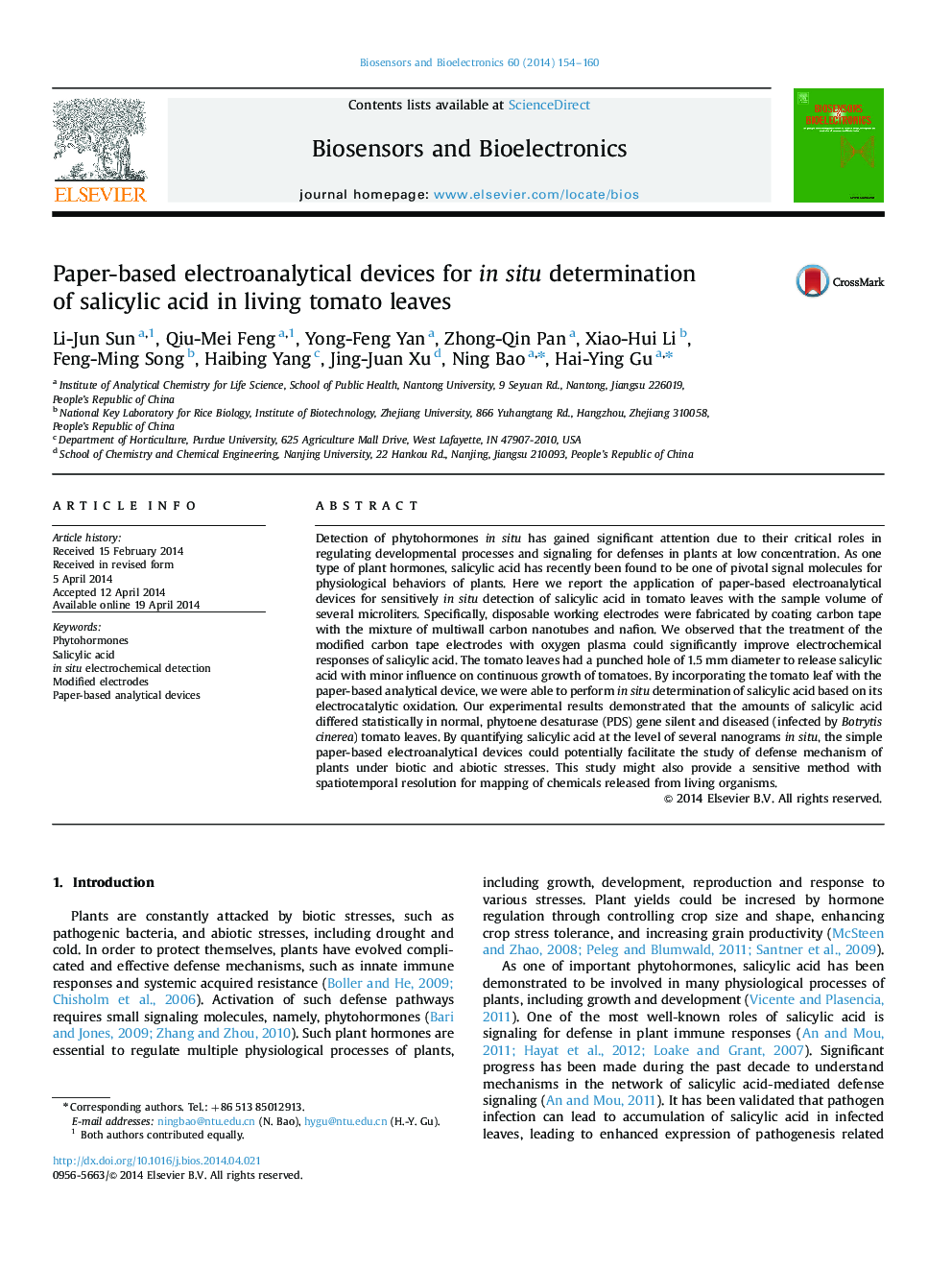| Article ID | Journal | Published Year | Pages | File Type |
|---|---|---|---|---|
| 866429 | Biosensors and Bioelectronics | 2014 | 7 Pages |
•Paper-based analytical devices were applied for in situ detection of salicylic acid.•The carbon tape modified with MWCNT and Nafion was used as the working electrode.•The modified electrodes were treated with oxygen plasma for improment of detection.•The device could be used to detect salicylic acid in living tomato leaves by punching a hole.
Detection of phytohormones in situ has gained significant attention due to their critical roles in regulating developmental processes and signaling for defenses in plants at low concentration. As one type of plant hormones, salicylic acid has recently been found to be one of pivotal signal molecules for physiological behaviors of plants. Here we report the application of paper-based electroanalytical devices for sensitively in situ detection of salicylic acid in tomato leaves with the sample volume of several microliters. Specifically, disposable working electrodes were fabricated by coating carbon tape with the mixture of multiwall carbon nanotubes and nafion. We observed that the treatment of the modified carbon tape electrodes with oxygen plasma could significantly improve electrochemical responses of salicylic acid. The tomato leaves had a punched hole of 1.5 mm diameter to release salicylic acid with minor influence on continuous growth of tomatoes. By incorporating the tomato leaf with the paper-based analytical device, we were able to perform in situ determination of salicylic acid based on its electrocatalytic oxidation. Our experimental results demonstrated that the amounts of salicylic acid differed statistically in normal, phytoene desaturase (PDS) gene silent and diseased (infected by Botrytis cinerea) tomato leaves. By quantifying salicylic acid at the level of several nanograms in situ, the simple paper-based electroanalytical devices could potentially facilitate the study of defense mechanism of plants under biotic and abiotic stresses. This study might also provide a sensitive method with spatiotemporal resolution for mapping of chemicals released from living organisms.
